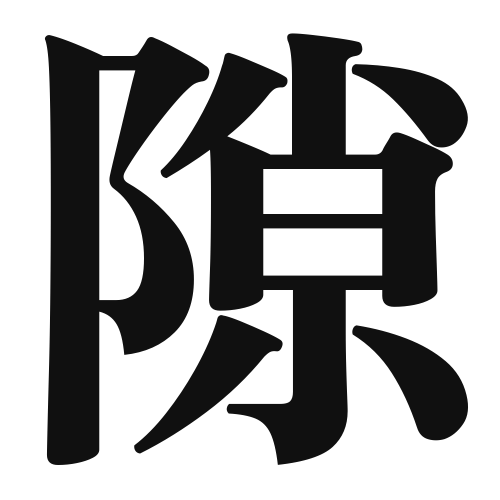1. Overview of Meaning
The kanji “隙” (suki) generally means “gap,” “crack,” or “space.” It refers to a small opening or interval between objects or concepts, often implying a moment of opportunity or vulnerability.
2. Formation and Radical
Formation of the Kanji: The kanji “隙” is a combination of the radical “阝” (which relates to hills or mounds) and the character “隙” itself, which can be interpreted as a representation of a gap or space. It is classified as a compound character (会意文字), combining elements to convey a specific meaning.
Radical: The radical for “隙” is “阝” (yama), which is often associated with geographical features.
3. Examples of Usage
Common Words and Phrases: Some common words that include “隙” are “隙間” (sukima – gap or space) and “隙をつく” (suki wo tsuku – to take advantage of a gap or opportunity).
Example Sentences in Daily Conversation:
- 「この隙間から風が入ってきます。」 (Kono sukima kara kaze ga haitte kimasu.) – “The wind comes in through this gap.”
- 「隙をついて彼に話しかけました。」 (Suki wo tsuite kare ni hanashikakemashita.) – “I took the opportunity to talk to him.”
4. Synonyms and Antonyms
Similar Kanji: A similar kanji is “隙間” (sukima), which specifically means “gap” or “space.” While “隙” refers to the concept of a gap, “隙間” emphasizes the physical space itself.
Antonyms: An antonym for “隙” could be “密” (mitsu), which means “dense” or “close,” indicating the absence of any gaps or spaces.
5. Cultural and Historical Background
Relation to Japanese Culture: The concept of “隙” is often associated with the idea of opportunity in Japanese culture, where timing and seizing the moment are valued.
Proverbs and Idioms: One relevant proverb is “隙を見せる” (suki wo miseru), which means “to show a gap,” often used to describe a situation where someone reveals a weakness or vulnerability.
